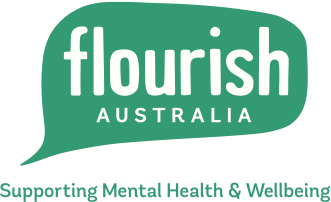
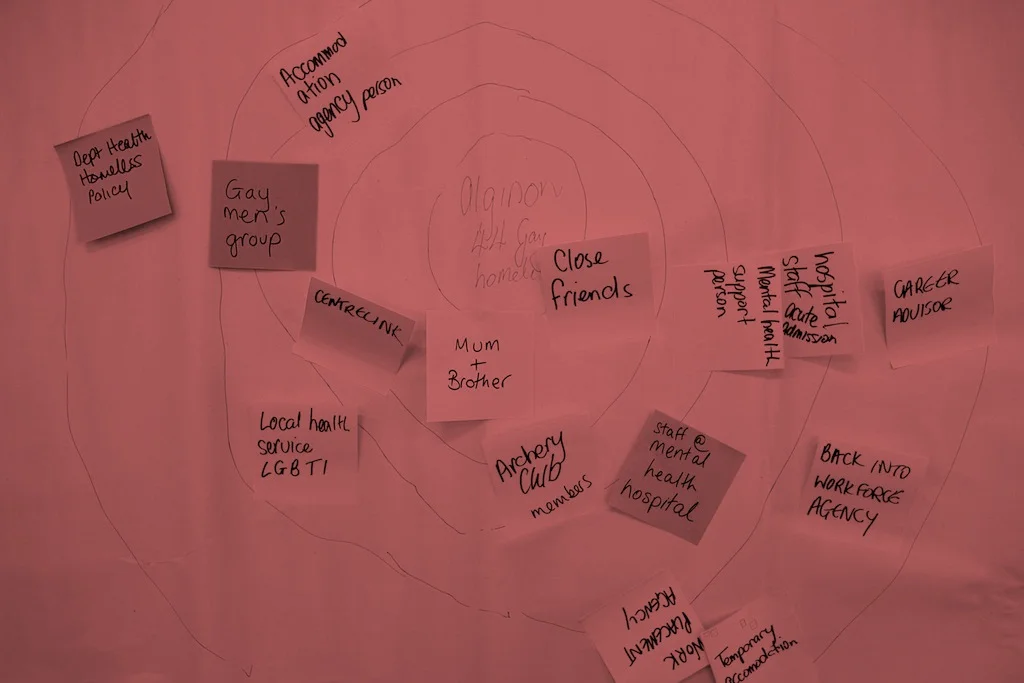

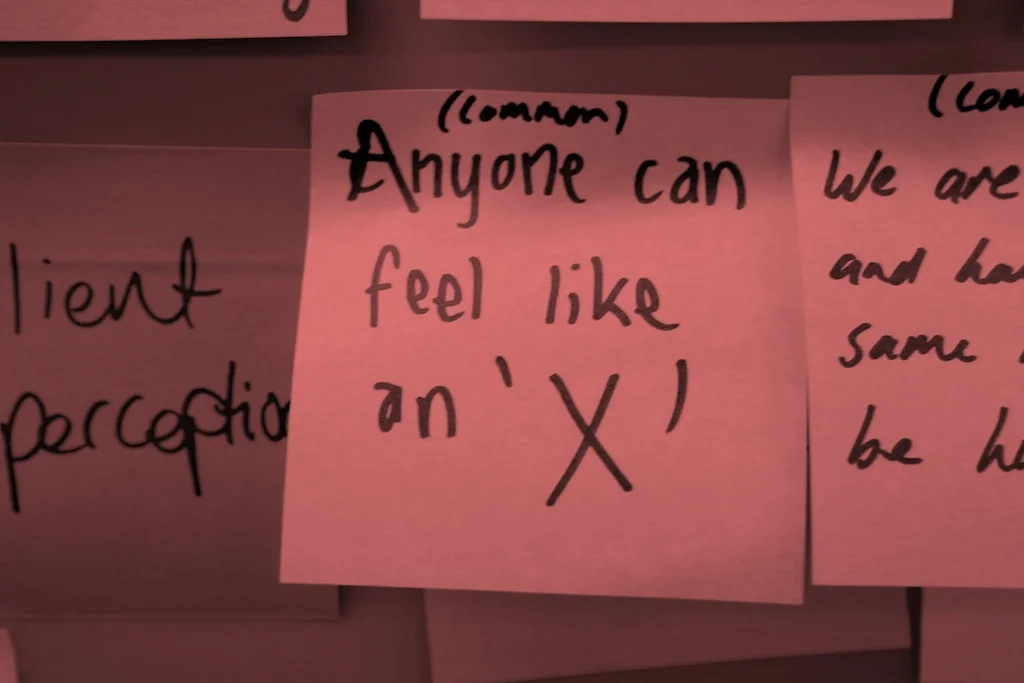
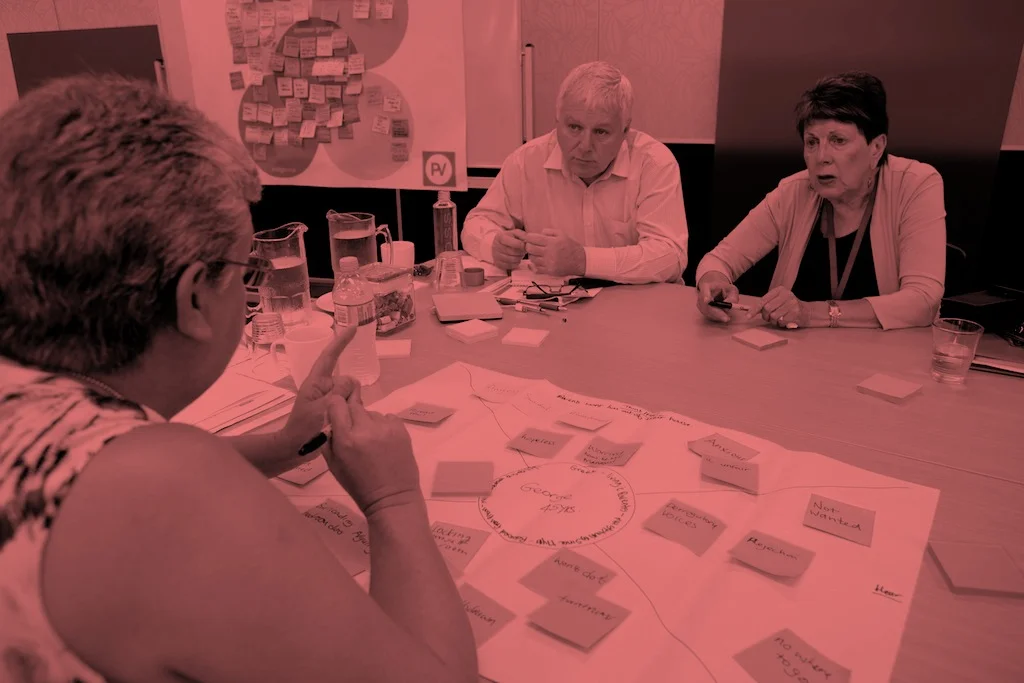
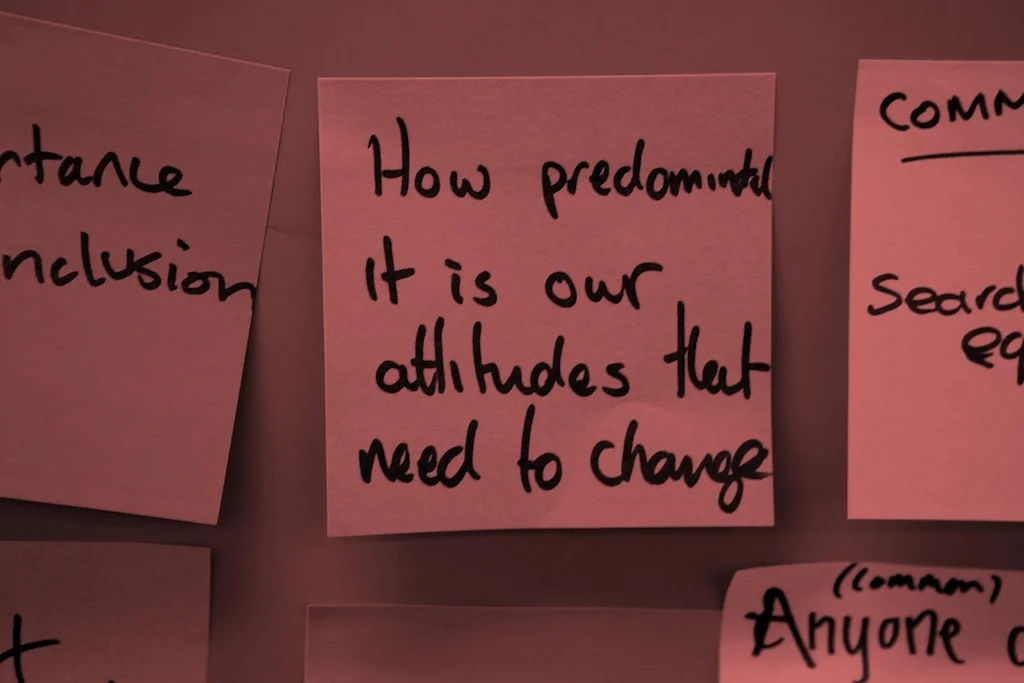
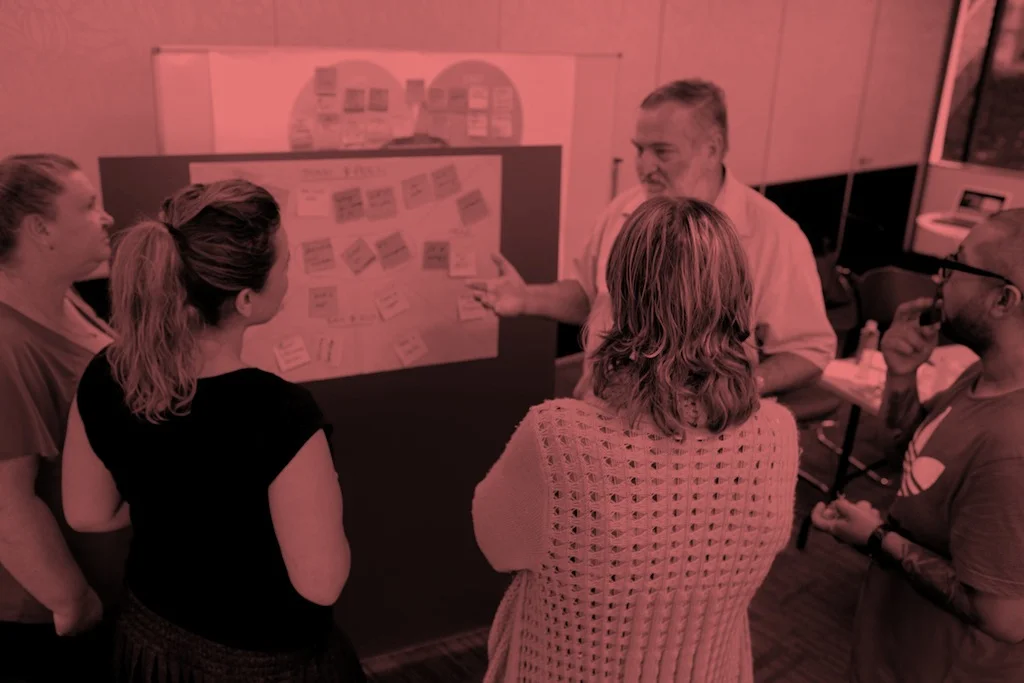

Module 3
Introduction to Lesbian, Gay, Bisexual, Transgender and Intersex inclusion
Module 3
Introduction to Lesbian, Gay, Bisexual, Transgender and Intersex inclusion
ABOUT THIS MODULE
Welcome to Flourish Australia’s introductory module on lesbian, gay, bisexual, transgender and intersex (LGBTI) inclusion in mental health settings.
This module is an introduction and does not replace the need for more extensive training on working with people from LGBTI communities in mental health contexts.
Staff are therefore encouraged to do further research and professional development in this area to fully inform their practice at Flourish Australia.
This module has 6 sections along with associated activities, external links and resources:
- Section 3.1 Understanding LGB & MSM communities
- Section 3.2 Understanding heterosexism
- Section 3.3 Living as a minority: an "X" in a sea of "O"
- Section 3.4 Biological sex, gender identity and gender presentation
- Section 3.5 Heterosexism and cisgenderism
- Section 3.6 Take home messages
ABOUT THE PRESENTERS
Vicky Coumbe
Vicky is Manager of Ageing and Training for ACON. Vicky has worked with ACON for 7 years in a variety of roles, from case management client work of complex clients, through to managing a mental health training program for community members and service providers.
At the time of developing this toolkit, Vicky's role was to develop a training team for ACON and roll out a national LGBTI inclusivity package for the aged care sector.
Vicky is originally from England with a background in allied health and counselling
Damian Hannan
Damian is Coordinator of Training programs for ACON. Damian has worked at ACON for 5 years in a variety of roles, from dealing with complex clients at ACON's Positive Living Centre, to managing the Front of House Team.
Damian is an experienced trainer and has been involved in developing the material that ACON will deliver for the aged care sector training.
Damian has travelled extensively in his previous career as a dancer and has settled back in Australia.

Section 3.1
Understanding LGB & MSM communities
Section 3.1
Understanding LGB & MSM communities
Vicky Coumbe talks through how to understand the terms lesbian, gay, bisexual and MSM.
DEFINITIONS
It is important to note that definitions can be subjective. Ultimately, it is important to ask the people who access our services how they self-identify with regards to their gender, gender identity and sexual orientation.
The Australian Government Department of Health's (2012) National Lesbian, Gay, Bisexual, Transgender and Intersex (LGBTI) Ageing and Aged Care Strategy provides some guidance on definitions.
The Queensland Association for Healthy Communities' LGBTI identities fact sheet also provides a great starting point.
SELF REFLECTION
View the video above and read the resource and provide definitions to the following terms:
- Lesbian
- Gay
- Bisexual
- MSM

Section 3.2
Understanding heterosexism
Section 3.2
Understanding heterosexism
Damian Hannan and Vicky Coumbe talk about the impact of heterosexism and how it can be taken for granted in our services.
HOMOPHOBIA AND HETEROSEXISM IN HEALTH SERVICES
Read this short article about homophobia and heterosexism in health care settings:
Irwin, Lyn., Homophobia and Heterosexism: Implications for Nursing and Nursing Practice, Australian Journal of Advanced Nursing, The, Vol. 25, No. 1, Sept/Nov 2007: 70-76
SELF REFLECTION
After watching the video above and reading the resource, consider:
What is heterosexism and how can heterosexist behaviour impact on people from LGBTI communities?

Section 3.3
Living as a minority: an "X" in a sea of "O"
Section 3.3
Living as a minority: an "X" in a sea of "O"
SELF REFLECTION
This section begins with a self-reflection:
Write a short story where, at some time in your life, you have felt like an X within a sea of circles, i.e. a time when you felt like a minority within a majority. The point of this activity is for us to engage in some of those feelings around what this felt like.
Consider what negative feelings you experienced and then consider some positive feelings with that same experience.
When you have completed this, watch the videos below where Damian reflects on people's experiences when they felt like an "X" in a sea of "O".
Damian reflects on people’s negative experiences when they felt like an ‘X’ in a sea of ‘O’. Consider whether they are similar to your negative experiences.
Damian reflects on people’s positive experiences when they felt like an ‘X’ in a sea of ‘O’. Consider whether they are similar to your positive experiences.

Section 3.4
Biological sex, gender identity and gender presentation
Section 3.4
Biological sex, gender identity and gender presentation
Vicky explores the definitions of Transgender and Intersex and how we understand the issues of biological sex, gender identity and gender presentation.
Damian leads a discussion that illustrates the spectrum of biological sex, gender identity and gender presentation.
SELF REFLECTION
What could be the impact of making assumptions about people's biological sex, gender identity and gender presentation in your daily practice at Flourish Australia?

Section 3.5
Heterosexism and cisgenderism
Section 3.5
Heterosexism and cisgenderism
Vicky leads a discussion about the impact of heterosexism and cisgenderism on people from LGBTi communities.
SELF REFLECTION
Consider what might be your responses to the following questions if you were from the LGBTI community:
- Does your family recognise and support your lifestyle and relationships? So if you answer yes to that, you would be one.
- Have you and your lifetime partner been able to marry when you wanted to?
- If a dinner dance is organised through your workplace, could you invite your partner and dance with the partner without attracting negative attention?
- If a carer comes to your home, do you feel comfortable leaving photographs of your partner, friends and social occasions in full view?
- Can you talk openly to healthcare and other service providers about your life and relationships?
- Can you comfortably walk down the street holding hands with your partner?
- Have you been able to tell your employer and work colleagues about your sexual orientation without fear of it affecting treatment at work and future promotion?
- When your lifetime partner dies, will you access his, her or the partner's superannuation without question?
- If your long-term partner is hospitalised, are you treated in the same way as any wife or husband and consulted about all medical decisions?
- If your partner died, would you automatically be acknowledged as immediate family in all arrangements for the funeral and disposal of the property?
BARRIERS TO ACCESSIBILITY
Now consider some of the barriers that you think are applicable to why LGBTI people may not be comfortable in coming into your service as it stands currently and declaring their status, whether it's sexual orientation, gender identity, intersex status.
What do you think about what may be current barriers to your service? - come up with a few points.
Compare your reflections with those raised by others during a previous workshop (see Insight Clips 1 to 4 below)
INSIGHT CLIPS: BARRIERS TO ACCESSIBILITY
Participants from Flourish Australia's Common Ground diversity workshop reflect on potential service barriers.

Section 3.6
Take home messages
Section 3.6
Take home messages
Vicky summarises some key messages as part of working to make your individual practice and service more inclusive for LGBTI communities:
- Don't make assumptions.
- Be mindful of lived experience.
- Change your language.
- If you don't know, ask.
- It's ok to make a mistake.
- How can you market your service to LGBTI people?
ADDITIONAL RESOURCES
ACON resource list
ACON has provided a list of useful resources and websites as a starting point for further information and support to improve LGBTI inclusive practice in your service.
ACON inclusive intake questions
ACON provide examples of LGBTI inclusive questions for an intake form (adapted from Gay and Lesbian Medical Association "Guidelines for care of LGBTI patients"
SELF REFLECTION
Consider:
What are three things you can do in your daily practice at Flourish Australia to ensure that you maintain an inclusive practice, regardless of who is in front of you?
